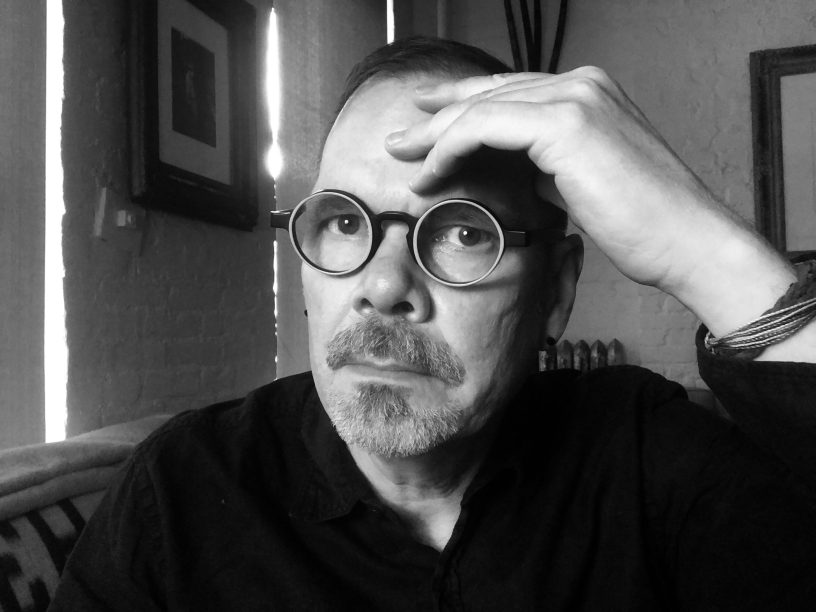The past 12 months may have been characterised by a level of uncertainty, but one staunch consistency has been a desire for social change among sections of the international community.
Nearly a decade after Time Magazine named ‘The Protestor’ as its Person of the Year, activism remains a powerful form of grassroots expression in the digital age.
It is the stories behind these campaigns that have been the focus of documentary filmmaker and investigative journalist David France throughout his career.
France’s debut film, How to Survive a Plague, which documents the early years of the HIV epidemic and the efforts of activist groups AIDS Coalition To Unleash Power (ACT UP) and Treatment Action Group (TAG), garnered widespread acclaim upon its release in 2012, appearing on over 20 “Best of the Year” lists, including Time and Entertainment Weekly.
He has continued to tell LGBTIQ+ activist stories in the years since, releasing The Death and Life of Marsha P. Johnson in 2017 and Welcome to Chechnya last year.
France will detail his body of work at today’s Australian International Documentary Film Conference (AIDC), including the process of documenting the lives and journeys of LGBTIQ+ asylum seekers as part of Welcome to Chechnya, and the feats the production went to in order to protect their identities.
Speaking to IF ahead of the event, France says activism today is as essential as any time in history.
“We’re at a time of increasing government power and that is always an opening for the contribution of outsider activism,” he says.
“It gives an insight into how historical movements impact history.
“I’ve always been interested in the stories of individuals who make change but are not necessarily heralded, or widely known.”
In the Oscar-shortlisted Welcome to Chechnya, France follows a group of activists risking their lives to confront the ongoing anti-LGBTIQ+ persecution in the repressive and closed Russian republic of Chechnya.
When he set out to make the film, France and his team had as of yet, no way to conceal the identities of gay and lesbian Chechen asylum seekers whose stories they had been entrusted with.
After trying multiple approaches, France settled on face replacement technology to protect the people in the film, casting ‘face doubles’ based on age and body type. The film’s footage was then reviewed to determine the lighting characteristics that would be used when filming the doubles.
Data from 23 face doubles were gathered across a period of five days in various lighting scenarios, with ‘veils’ eventually applied across 480 shots covering 50 minutes of film. With multiple subjects in many of the shots, the project encompassed more than 100 minutes of veiling overall.
The project has since been shortlisted for a visual effects Oscar, a first for a documentary.

Set against the backdrop of what is widely known as Chechnya’s gay-purge, the film seeks to reveal both the abuses faced by gay and lesbian Chechens, as well as the triumphs of activists on the ground saving people’s lives via the Russian LGBT Network.
Welcome to Chechnya premiered at the 2020 Sundance Film Festival, where it won the special jury award for documentary editing.
It has since been described as “essential viewing” by the HuffPost and “documentary filmmaking on a level rarely seen and experienced” by Film Threat.
For France, the film is aligned with his fundamental desire to “enrich the canon” of social change throughout history.
“In my film career, I have focused on LGBTQ activism and the ways it has historically really given us this kind of accepted cultural terrain, without us really understanding how we got there,” he says.
“My first film and last book are on how activism around the early HIV pandemic changed everything about the way we understand science, everything about the way medicine is practised globally, and the way pharmaceutical science is conceived and carried out.”
“It’s a story that very few people knew anything about because it took place so urgently and so much on the front lines, and on the outside the interest of historians, meaning it was overlooked.
“The thing I have been doing with my career is to go to those overlooked stories and lift them up, so we may be able to pass them on to the next generation.”
A central theme of How to Survive a Plague and the subsequent novel How to Survive a Plague: The Inside Story of How Citizens and Science Tamed AIDS, is the relationship between activism, medical science, and the bureaucracy, the interaction of which can also be seen in the journey towards a COVID vaccine, 30 years later.
The parallels even extend to the personnel involved, with current and past director of the National Institute of Infectious Diseases Dr Anthony Fauci urged by ACT UP to include their members in the government’s development process for AIDS drugs long before he advised the US Government on the coronavirus pandemic.
France will explore the development and roll out of COVID-19 vaccines in a newly announced project to be distributed globally by Dogwoof.
He says he feels lucky to be able to witness a return to the citizen-science activism that the HIV pandemic helped to launch.
“Here we are during COVID, and the activism on the ground is real and it’s impactful,” he says.
“To see that work in a modern environment, with greater amplification tools such as social media, means it will be fascinating to see which of those stories will be an essential part of this history when it is told.
“Journalists are often referred to as the writers of the first draft of history but it takes a decade or more for the final draft to make itself known.
“The biggest challenge for me has always been finding the deeper truth – why should people be watching and what are the timeless messages of these stories?”


